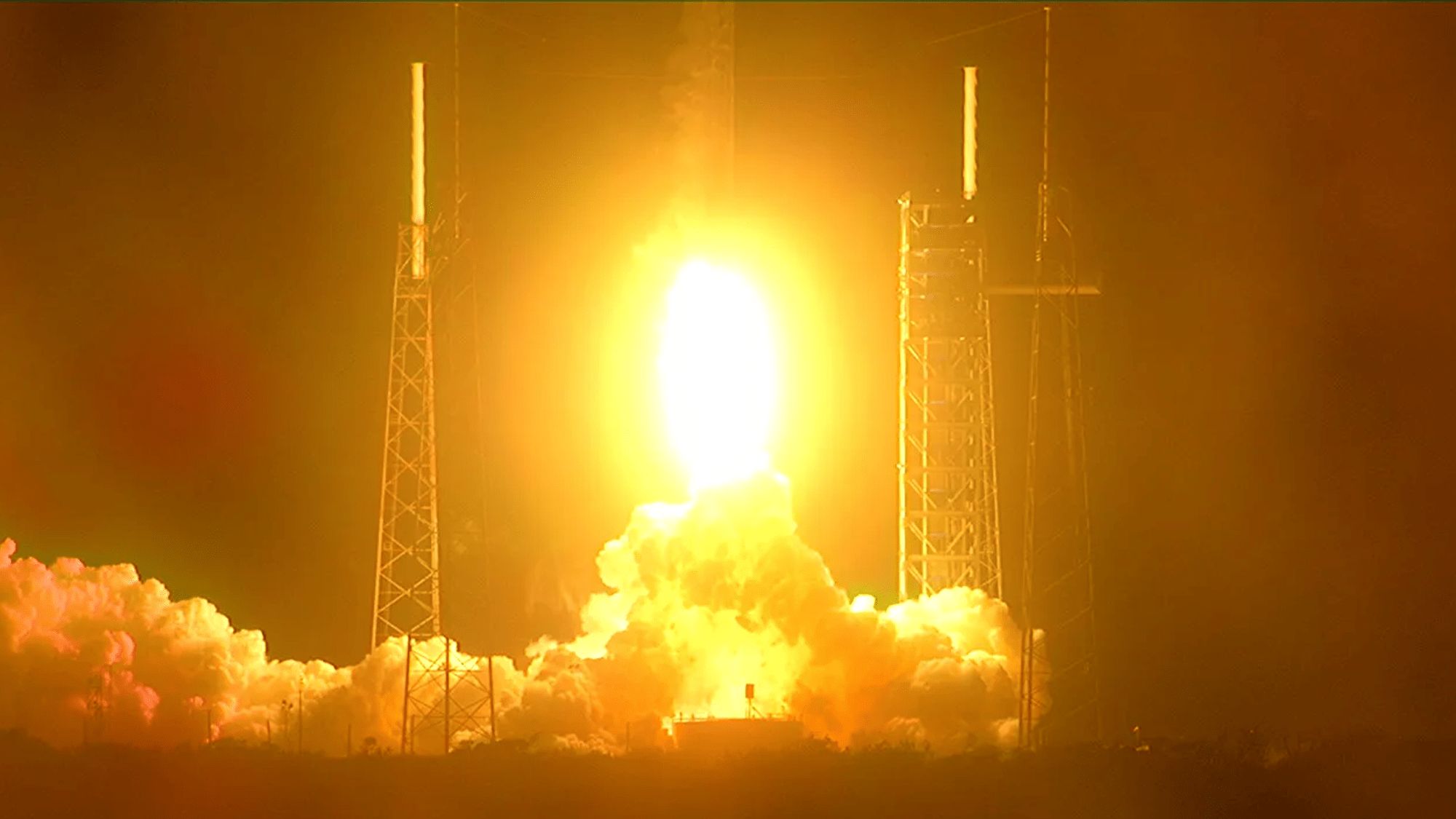

NASA’s PACE satellite successfully launched into orbit at 1:33 a.m. EST on February 8. The climate satellite launched aboard a SpaceX Falcon 9 rocket from Cape Canaveral Space Force Station in Florida.
[Related: Scientists say the ocean is changing color—and it’s probably our fault.]
The new Plankton, Aerosol, Climate, ocean Ecosystem satellite will study ocean health, air quality, the atmosphere, and the effects of climate change from about 420 miles above the Earth. While NASA already has over 24 Earth-observing satellites and instruments in orbit, this new one should give scientists better insight into how particles in the atmosphere like pollutants and volcanic ash interact with algae and plankton.

“It’s going to teach us about the oceans in the same way that Webb is teaching us about the cosmos,” said Karen St. Germain, director of NASA’s Earth Science Division, Science Mission Directorate, during a pre-launch briefing on February 4th. St. Germain is referencing the James Webb Space Telescope, which has been unveiling mysteries of the deep cosmos for almost two years.
What’s on board
PACE will scan the Earth every day using two science instruments, while a third device will take monthly measurements.
According to NASA, the hyperspectral ocean color instrument will help researchers measure the world’s oceans and other bodies of water across a spectrum of ultraviolet (UV), visible, and near-infrared light. PACE will be able to detect 200 colors, compared to the seven or eight colors that current satellites can pick up. Seeing such a wide spectrum of color will allow researchers to track how phytoplankton is distributed around the globe.
Two polarimeter instruments are also onboard–Hyper-Angular Rainbow Polarimeter #2 and Spectro-polarimeter for Planetary Exploration. Both will detect how sunlight interacts with particles in the atmosphere. This will give sciencents new insight into atmospheric aerosols and cloud properties, and air quality at local, regional, and global scales.
“Observations and scientific research from PACE will profoundly advance our knowledge of the ocean’s role in the climate cycle,” St. Germain said in a statement following the launch. “The value of PACE data skyrockets when we combine it with data and science from our Surface Water and Ocean Topography mission–ushering in a new era of ocean science. As an open-source science mission with early adopters ready to use its research and data, PACE will accelerate our understanding of the Earth system and help NASA deliver actionable science, data, and practical applications to help our coastal communities and industries address rapidly evolving challenges.”
Why study phytoplankton from space
Our planet’s oceans are responding to climate change in several different ways. Sea levels are rising as polar ice melts. Marine heat waves are killing sea life and fueling stronger storms. The ocean is even getting more green and shifts in ocean color is an indication that ecosystems may also be changing. A July 2023 study found that the changes and blue-green fluctuations to the ocean’s hue over the last two decades cannot be explained by natural year-to-year variability alone. These changes are present in over 56 percent of the planet’s oceans. The study also found that tropical oceans near the Earth’s equator have become steadily greener overtime.
[Related: The epic journey of dust in the wind often ends with happy plankton.]
Following tiny phytoplankton can help monitor all of these changes. These microscopic marine algae play a major role in the global carbon cycle. Phytoplankton absorb carbon dioxide from the atmosphere and convert it into cellular material. It drives the larger aquatic and global ecosystem by providing food for bigger organisms.
PACE will provide the first measurements of phytoplankton community composition around the world. “This will significantly improve our ability to understand Earth’s changing marine ecosystems, manage natural resources such as fisheries and identify harmful algal blooms,” wrote NASA.
A mission 20 years in the making
In addition to two scrubbed launch attempts earlier this week, PACE has powered through other adversity on its way into orbit. The Trump Administration tried to cancel the mission four times in separate budget proposals. However, the funds were already allocated by Congress which saved it.
It has also had delays and cost overruns. NASA capped the mission’s total price tag at $805 million in 2014, with a launch initially scheduled for 2022. By the 2024 launch, the cost ballooned to $948 million.
“After 20 years of thinking about this mission, it’s exhilarating to watch it finally realized and to witness its launch. I couldn’t be prouder or more appreciative of our PACE team,” Jeremy Werdell, PACE project scientist at NASA’s Goddard Space Flight Center, said in a statement. “The opportunities PACE will offer are so exciting, and we’re going to be able to use these incredible technologies in ways we haven’t yet anticipated. It’s truly a mission of discovery.”
Scientists expect to start getting the first data from PACE in a month or two.
